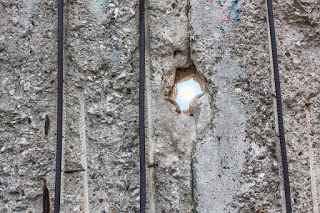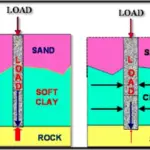Saad Iqbal | 🗓️Modified: May 2, 2017 | ⏳Read Time: 5 min | 👁Post Views: 919
When preparing
concrete, on-site engineers use locally available materials of various properties to come up with the ultimate mixture. It is for this reason that the strength of the concrete will vary from one batch to the other in the fullness of time. Moreover, this variation in strength is dependent on the quality of material used, the mix portion and technique, as well as handling and workmanship. To some extent, these variations are impossible to avoid.
But it is also important to keep these variations to the minimum with the ultimate goal of reducing the contrast between strength and characteristics of the
concrete mix. This would mean boosting the quality of the cement substance in the long run.
The method used by engineers to control the above distinction is known as quality control of concrete. The idea is to lower the aforementioned variations so as to manufacture a uniform product which possess the right characteristics for the intended job.
The main benefits of conducting quality control for concrete
The importance of concrete quality control cannot be under-estimated in civil engineering. Those advantages have been listed below:
1 It’s a formula for compensating weak points
Where there is weakness, quality control assures that a compensation formula will be used to achieve fairness in another area.
2 Promotes logical use of available materials
Quality control is a form of guidance concerning the logical use of materials available for construction. It seeks to test the various properties of those materials while at the same time focusing on how cost can be reduced.
3 Assurance of project completion without faults
Quality control of concrete checks the production of concrete to rectify faults that exist or may develop in the future. This promotes the completion of the project as intended.
4 Repair and maintenance costs are kept to the minimum
Engineers implement quality control to cut costs. One way of doing so is by making sure that the project in question will not undergo setbacks that usually come in form of future repair and maintenance costs.
5 Over designing is not possible with a quality control plan
The quality control procedure seeks to minimize or eliminate overdesign, and this aids in keeping costs to the minimum.
General requirements of good concrete quality control plan
Concrete that is of quality is strongest, thickest, work-able, and economical to use. This concrete must be produced using well-graded and durable aggregates.
Stage 1 of the quality control process before concreting
(a) The cement
This process involves making various strength tests on cement tubes. The effective control cement must be:
-shielded from moisture
-should be tested after 3 months if stored for future use
-should not be used in case large lumps are detected in cement bags
(b) Aggregate
The concrete aggregate should be prepared with standard specification in mind. Physical and mechanical properties affect the shape, grade, gravity, and water absorption rate of the concrete.
Other properties that should be tested include the level of organic impurities and deleterious materials that are present in the mixture.
(c) Water
In this stage, chemical analysis will be conducted as a way of approving the source. If suspended impurities are detected, water should be allowed more time until the impurities can settle down. Comprehensive strength test should be done with at least 3 cubes prepared with water. These cubes should be less than 90% of the average strength of the concrete cubes made with pure water.
Stage 2 of the quality control process during concreting
Concrete operations such as mixing, batching, laying, transporting, or curing is done under the following precautions:
-
Batching should be done by weight, although volume batching can be permitted under the supervision of a more experienced engineer.
-
During the mixing process, the mixer should operate at 15/20 rev per minute. This mixing process should take at least 2 minutes.
-
Workability of concrete should be checked using a slump test
-
The mixture should be transported carefully to prevent segregation.
-
Heated water and aggregate is considered ideal for use in colder climates.
-
The mixture of concrete should also be protected from weather extremes at an early stage.
-
Requisite strength only develops after proper time for curing has been allowed.
Stage 3: after construction
In this stage, tests are done with cubes made out of the concrete material after the concrete has been laid and compacted.
The design specification should guide the engineer on trueness of shape, size, and dimension. This is ascertained by carrying out different measurements.
Also, visible reinforcements should be covered with enough concrete. Action should be taken where appropriate.
Finally, the cube samples are the tools used to test strength of concrete samples at 28 days. If the strength doesn’t meet the minimum qualifications as specified in the standards, the following things will happen:
The engineer will conduct non-destructive tests known as ultrasonic pulse velocity to get a rough idea of the uniformity of the construction. Otherwise, cores of the structure can be cut open to test for strength. A chemical analysis for the hardened concrete may be performed as well.

















